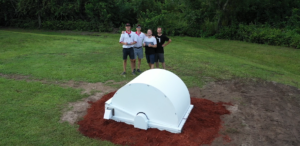What’s a piece of hardware without the operating system to run it? When buying a new desktop computer, the decision often comes down to a few choices: Mac, PC, or Linux. Operating systems in general are designed to run on a limited variety of processors, for example, Microsoft Windows historically has run on processors that run the x86 instruction set (they do occasionally get it to run, with some qualifications, on ARM processors). Linux has been compiled to run on a variety of computer architectures. macOS, it turns out, used to run on Mac processors and now runs on x86 and ARM.
With x86 and ARM being the dominant processors on laptops, desktops, and even phones, does the same hold true for IoT devices? Yes! And no. It depends.
If we are talking about microcomputers, which are essentially tiny desktop computers, often with GPIO (General Purpose Input Output) pins, then yes. The Raspberry Pi 3 is a widely adopted version of this. With an ARM processor, the same architecture as the ones that are in the vast majority of Android phones these days, it can run both many flavors of Linux and a special version of Microsoft’s operating system called Windows 10 IoT Core that gets specifically compiled for ARM processors.
When we want to go with even smaller, cheaper, less power-hungry (and less versatile) devices called microprocessors, the operating systems are more tied to the hardware because they run so “close to the metal” as they say. Rather than talking through abstractions, like the full-fat operating systems mentioned thus far, they often have strong dependencies on the underlying hardware. This category of operating system are typically called “Real Time Operating Systems.” Because there are many different types of microprocessors, there are many different types of RTOS in use today. For example, if you choose to use a Particle Photon, it comes with an operating system called “Device OS”. For any given microcontroller, there are usually a few different RTOS compiled down to be used by that hardware. With so many microcontroller choices, the mix-and-match options with operating systems are varied. Which one you choose is all about what you want to do. For example, if you wanted to use JavaScript to control your Particle Photon (rather than the out-of-the-box C-like language), you could install a new OS (or “firmware”) called VoodooSpark and run the Johnny Five framework on top of it.
For the Smart Bronco project, I am choosing a Raspberry Pi 3 with Windows 10 IoT Core running on it. Windows 10 IoT Core is like Windows-light, with the ability to run only Universal Windows Applications. It is specifically designed for the Internet of Things, even going so far as allowing users to create their own build of the operating system, for example if you’d like to remove the ability to do SSH in production for security purposes. When it comes to operating systems, I know that Microsoft has a great track record with stability and support, and so that confidence also helped make this decision easier for me.
As a developer, the operating system allows me to write code in C#, which is a language I’m familiar with. It will also allow me to take advantage of some of the tools that Microsoft gives for deploying updates to devices (more on that later). I also will be able to run multiple programs at the same time, which could be useful as I start to add more functionality to the Bronco. In addition, because I want to have the option for both “headed” (with a user interface) and “headless” (without a user interface), I know Windows 10 IoT Core gives me both those options.
In your own search for the perfect operating system for your project, making a choice and learning from it is more important that choosing the perfect solution right out of the gate.

